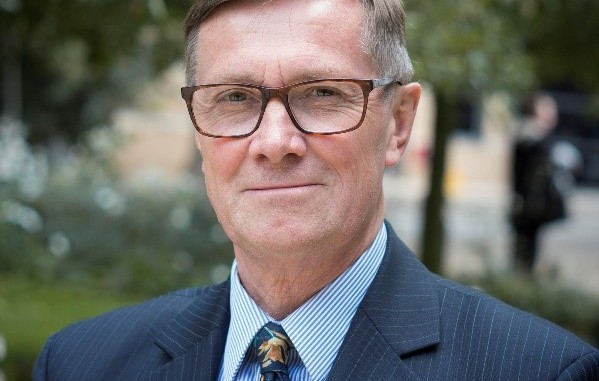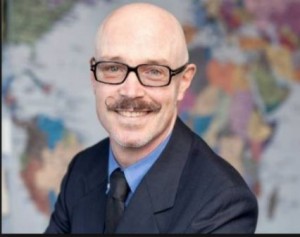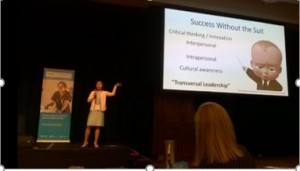
Professor Peter Littlejohns is deputy director of NIHR CLAHRC South London and leads the public health theme.
Our public health theme is exploring how to support health systems to be effective, efficient and equitable. I am interested in how we can make difficult prioritisation decisions understandable and (perhaps eventually) acceptable to members of the public. To this end, I have developed an interactive decision making audit tool (DMAT) based on a social values framework www.priorities4health.com . As part of the project I have established collaborative links with colleagues from Griffith University, Queensland, Australia and University of Otago, Dunedin, New Zealand. I am now down under to meet them face to face, give a series of public lectures and design a new international research programme.
I thought it would be useful and perhaps interesting to keep you up to date with my progress.
I was welcomed to Brisbane by Professor Paul Scuffham, Director of the Centre for Applied Health Economics at Griffiths University and Deputy Director – Menzies Health Institute Queensland. This university has a number of campuses scattered around the locality from central town on the south bank to the rural Nathan Campus where Paul’s department is based.

I attended the 10th Health Services and Policy Research Conference at Surfers Paradise on the Gold Coast, Queensland. Organised by the Health Services Research Association of Australia and New Zealand it brings together both country’s main researchers and policy makers every two years. The current association chair is Jonathon Karnon, a health economist from Adelaide who is a product of the Brunel and Sheffield traditions of health technology assessment (HTA) and economic evaluation. The emphasis this year was on achieving a balance between acute and primary care – getting the process of prioritisation right. This is an issue close to my heart and the subject of my CLAHRC theme so I was delighted to be invited to give a presentation.
The opening plenaries were by Professor Judith Smith from Birmingham University, UK who presented the evidence base for the shift from acute to primary (community) care. She demonstrated that making the shift can improve quality, but not necessarily at reduced cost. She introduced the audience to the ‘Institute of Disappointment’ where health services researchers have to advise policymakers and politicians that their latest health initiative did not work. The second presenter was Robin Gauld (my New Zealand host for the following few weeks) Co-Director of the Centre for Health Systems and Technology, Dean of the Business School and Pro-Vice Chancellor Commerce at the University of Otago.

He continued the theme with the ‘School of Disillusionment’. But by the end of the session and certainly by the end of the conference, a ‘Department of Hope’ had been designed. What was evident after the three days was that health services research in this part of the world is active and vital.
It was also clear that there was an increasingly successful drive to reduce health inequalities. I saw the best depiction of how to explain inequalities from Tim Stokes, Elaine Gurr Professor and Head of the Department of General Practice and Rural Health, University of Otago and Co-Director of the Centre for Health Systems and Technology, when he presented the New Zealand Health Research strategy. An old NICE colleague (and my second New Zealand host). He presented a model that aims to address the determinants of variation in health status rather than patching up the effects.

Equality versus Equity
In the first image it assumes that everyone will benefit from the same intervention – they are treated equally – but the outcome is very different. In the second image everyone is given different levels of support in order for them to have equal access to the game – they are treated equitably. In the third image all three can see the game without any support or accommodations because the cause of the inequity was addressed. The system barrier has been removed. However a footnote from me, being closer to the height of the right hand person I think that the little guy might prefer scenario two. But that ethical debate is for another day.
This approach appears to be working as Dr Rawiri, an indigenous doctor from New Zealand, informed the audience that medical schools there had achieved the right proportion of indigenous graduates after implementing an explicit strategy – Oxford and Cambridge take note for their North/South divide initiatives!
Both Otago and Auckland Medical Schools have achieved population parity for Māori graduates. In 2016, 16.5% (45/273) of the students graduating at Otago and 14.9% (32/215) at Auckland were Māori medical graduates. The estimate for the national Māori population is 15.4%. Tim tells me that their graduation ceremony last December was quite an affair – ‘Māori students students wearing ceremonial cloaks (korowai) over their gowns, Pacific students likewise … spontaneous hakas from family (whanau) in the audience.

Collaboration between researchers, policymakers and consumers was a recurring theme throughout the three days and I was delighted to hear many references to the CLAHRCs in the UK. The acronymn seems to be better known (and understood) 9455 miles away than in England where they are based!
The most impressive element of the conference for me was the drive to involve the new generation of researchers. They were encouraged not only to undertake ‘robust’ studies, but also to ensure that they could present their results in an engaging and informative manner. The oral poster competition demonstrated what can be done in a three-minute presentation. In the time it takes many of my generation to ‘warm up’ they had described in a truly understandable (and entertaining) manner a myriad of health care challenges and solutions. They even had a ‘Shark tank’ session – the equivalent of our ‘Dragons Den’.

Next I fly off to Dunedin to hear how our joint project on fairness in prioritising health in New Zealand (funded by the NZ lottery fund ) is faring. But today I am visiting what this part of Australia is famous for…



Leave a Reply